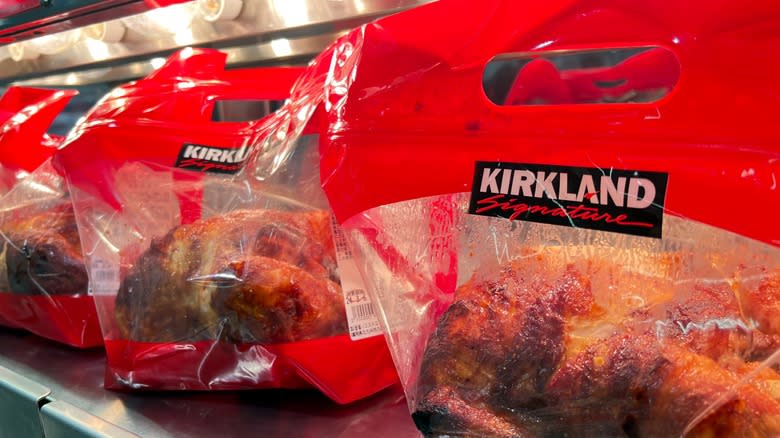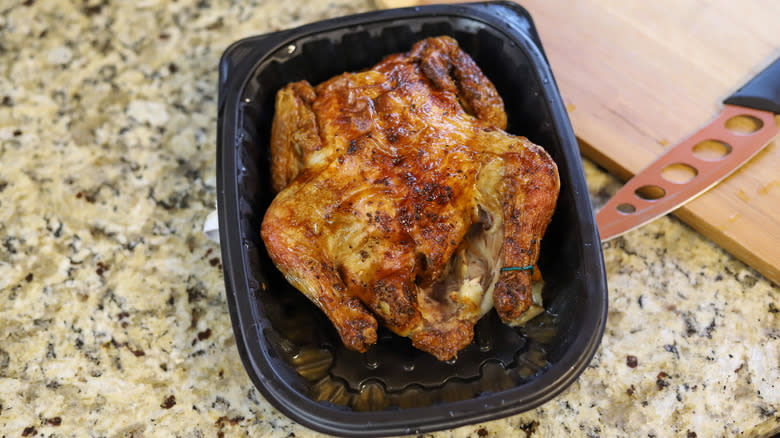Why You Shouldn't Store Rotisserie Chicken In The Bag It's Sold In

Smart shoppers know the value of buying a rotisserie chicken during a grocery run. You can stretch this purchase through all the delicious ways you can use it in the kitchen, letting you make meals that don't take long to cook. To ensure that the chicken stays flavorful and juicy, take it out of its packaging once you get home.
Since the chicken is packed into the bag while warm, keeping it sealed builds up moisture. This creates a humid setting that's conducive to the growth of bacteria, yeast, and mold and will hasten spoilage. Rotisserie chicken is safe to leave out at room temperature for two hours while you set the table for a meal. If the day is quite warm and hits beyond 80 degrees Fahrenheit, remember to store the food in the refrigerator within an hour.
If you're not planning to serve the chicken immediately, let it cool down before transferring it into a different container, following the same principle of avoiding moisture buildup that affects food safety. You can hasten the cooling process by breaking the chicken down into smaller pieces. Debone it at the same time, but don't throw the bones out so you can make chicken stock later. Encase the meat in plastic wrap or aluminum foil to keep it from drying out and absorbing other odors, then seal it inside an airtight container. Place it at the back of the fridge where it'll stay good for four days.
Read more: What Happens If You Accidentally Eat Mold?
Reheat Frozen Rotisserie Chicken Properly

Rotisserie chicken lasts for four months in the freezer so if you won't be able to finish it within four days, follow the same storage steps as above then place the meat in the coolest section of the freezer. Don't place it beside raw meat to minimize bacteria transfer.
To defrost frozen rotisserie chicken, place it in the refrigerator overnight. Once thawed, you can reheat it in different ways. Transfer the chicken into a baking pan and cover it with aluminum foil. If you stored it whole and want to crisp up the skin, spray some vegetable oil on it before sliding it into an oven that's been preheated to 350 degrees Fahrenheit. Heat it for 30 minutes. Achieve the same effect with an air fryer without having to use oil. Put the chicken in the basket, set the air fryer to 350 degrees Fahrenheit, and cook for four minutes. With the microwave, reheat the meat in 30-second intervals from six to nine minutes. This method is best for deboned chicken since the bones absorb heat at a different rate than the meat.
No matter the method, the chicken's internal temperature must reach 165 degrees Fahrenheit before it's safe to consume. Thaw and reheat only the portion you plan to eat because the meat's quality degrades with each reheating, and always check the chicken for a sour smell, a slimy texture, and a gray pallor. These are signs that the food must be discarded.
Read the original article on Tasting Table

